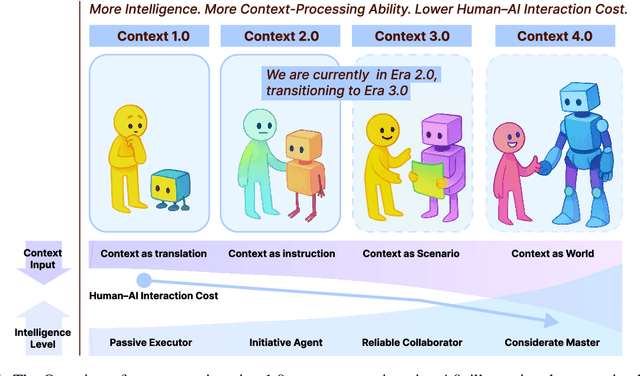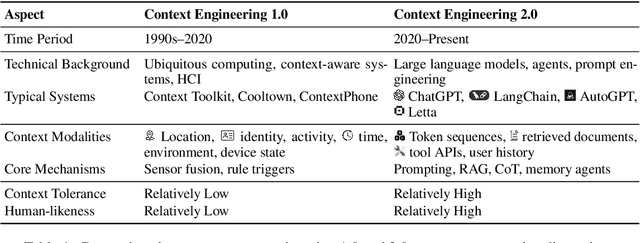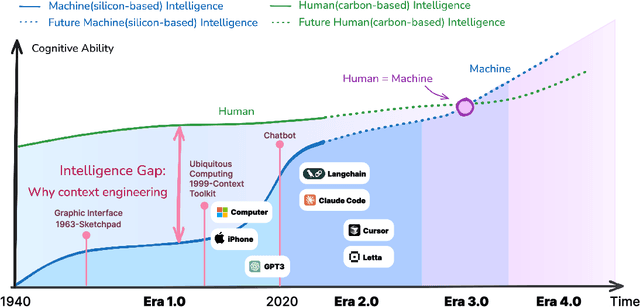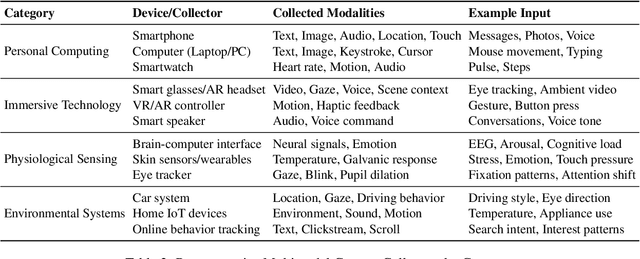Yang Xiao
Interaction as Intelligence Part II: Asynchronous Human-Agent Rollout for Long-Horizon Task Training
Nov 03, 2025Abstract:Large Language Model (LLM) agents have recently shown strong potential in domains such as automated coding, deep research, and graphical user interface manipulation. However, training them to succeed on long-horizon, domain-specialized tasks remains challenging. Current methods primarily fall into two categories. The first relies on dense human annotations through behavior cloning, which is prohibitively expensive for long-horizon tasks that can take days or months. The second depends on outcome-driven sampling, which often collapses due to the rarity of valid positive trajectories on domain-specialized tasks. We introduce Apollo, a sampling framework that integrates asynchronous human guidance with action-level data filtering. Instead of requiring annotators to shadow every step, Apollo allows them to intervene only when the agent drifts from a promising trajectory, by providing prior knowledge, strategic advice, etc. This lightweight design makes it possible to sustain interactions for over 30 hours and produces valuable trajectories at a lower cost. Apollo then applies supervision control to filter out sub-optimal actions and prevent error propagation. Together, these components enable reliable and effective data collection in long-horizon environments. To demonstrate the effectiveness of Apollo, we evaluate it using InnovatorBench. Our experiments show that when applied to train the GLM-4.5 model on InnovatorBench, Apollo achieves more than a 50% improvement over the untrained baseline and a 28% improvement over a variant trained without human interaction. These results highlight the critical role of human-in-the-loop sampling and the robustness of Apollo's design in handling long-horizon, domain-specialized tasks.
InnovatorBench: Evaluating Agents' Ability to Conduct Innovative LLM Research
Nov 03, 2025Abstract:AI agents could accelerate scientific discovery by automating hypothesis formation, experiment design, coding, execution, and analysis, yet existing benchmarks probe narrow skills in simplified settings. To address this gap, we introduce InnovatorBench, a benchmark-platform pair for realistic, end-to-end assessment of agents performing Large Language Model (LLM) research. It comprises 20 tasks spanning Data Construction, Filtering, Augmentation, Loss Design, Reward Design, and Scaffold Construction, which require runnable artifacts and assessment of correctness, performance, output quality, and uncertainty. To support agent operation, we develop ResearchGym, a research environment offering rich action spaces, distributed and long-horizon execution, asynchronous monitoring, and snapshot saving. We also implement a lightweight ReAct agent that couples explicit reasoning with executable planning using frontier models such as Claude-4, GPT-5, GLM-4.5, and Kimi-K2. Our experiments demonstrate that while frontier models show promise in code-driven research tasks, they struggle with fragile algorithm-related tasks and long-horizon decision making, such as impatience, poor resource management, and overreliance on template-based reasoning. Furthermore, agents require over 11 hours to achieve their best performance on InnovatorBench, underscoring the benchmark's difficulty and showing the potential of InnovatorBench to be the next generation of code-based research benchmark.
Context Engineering 2.0: The Context of Context Engineering
Oct 30, 2025



Abstract:Karl Marx once wrote that ``the human essence is the ensemble of social relations'', suggesting that individuals are not isolated entities but are fundamentally shaped by their interactions with other entities, within which contexts play a constitutive and essential role. With the advent of computers and artificial intelligence, these contexts are no longer limited to purely human--human interactions: human--machine interactions are included as well. Then a central question emerges: How can machines better understand our situations and purposes? To address this challenge, researchers have recently introduced the concept of context engineering. Although it is often regarded as a recent innovation of the agent era, we argue that related practices can be traced back more than twenty years. Since the early 1990s, the field has evolved through distinct historical phases, each shaped by the intelligence level of machines: from early human--computer interaction frameworks built around primitive computers, to today's human--agent interaction paradigms driven by intelligent agents, and potentially to human--level or superhuman intelligence in the future. In this paper, we situate context engineering, provide a systematic definition, outline its historical and conceptual landscape, and examine key design considerations for practice. By addressing these questions, we aim to offer a conceptual foundation for context engineering and sketch its promising future. This paper is a stepping stone for a broader community effort toward systematic context engineering in AI systems.
AFT: An Exemplar-Free Class Incremental Learning Method for Environmental Sound Classification
Sep 19, 2025Abstract:As sounds carry rich information, environmental sound classification (ESC) is crucial for numerous applications such as rare wild animals detection. However, our world constantly changes, asking ESC models to adapt to new sounds periodically. The major challenge here is catastrophic forgetting, where models lose the ability to recognize old sounds when learning new ones. Many methods address this using replay-based continual learning. This could be impractical in scenarios such as data privacy concerns. Exemplar-free methods are commonly used but can distort old features, leading to worse performance. To overcome such limitations, we propose an Acoustic Feature Transformation (AFT) technique that aligns the temporal features of old classes to the new space, including a selectively compressed feature space. AFT mitigates the forgetting of old knowledge without retaining past data. We conducted experiments on two datasets, showing consistent improvements over baseline models with accuracy gains of 3.7\% to 3.9\%.
Temporally Heterogeneous Graph Contrastive Learning for Multimodal Acoustic event Classification
Sep 18, 2025Abstract:Multimodal acoustic event classification plays a key role in audio-visual systems. Although combining audio and visual signals improves recognition, it is still difficult to align them over time and to reduce the effect of noise across modalities. Existing methods often treat audio and visual streams separately, fusing features later with contrastive or mutual information objectives. Recent advances explore multimodal graph learning, but most fail to distinguish between intra- and inter-modal temporal dependencies. To address this, we propose Temporally Heterogeneous Graph-based Contrastive Learning (THGCL). Our framework constructs a temporal graph for each event, where audio and video segments form nodes and their temporal links form edges. We introduce Gaussian processes for intra-modal smoothness, Hawkes processes for inter-modal decay, and contrastive learning to capture fine-grained relationships. Experiments on AudioSet show that THGCL achieves state-of-the-art performance.
LPGNet: A Lightweight Network with Parallel Attention and Gated Fusion for Multimodal Emotion Recognition
Aug 12, 2025Abstract:Emotion recognition in conversations (ERC) aims to predict the emotional state of each utterance by using multiple input types, such as text and audio. While Transformer-based models have shown strong performance in this task, they often face two major issues: high computational cost and heavy dependence on speaker information. These problems reduce their ability to generalize in real-world conversations. To solve these challenges, we propose LPGNet, a Lightweight network with Parallel attention and Gated fusion for multimodal ERC. The main part of LPGNet is the Lightweight Parallel Interaction Attention (LPIA) module. This module replaces traditional stacked Transformer layers with parallel dot-product attention, which can model both within-modality and between-modality relationships more efficiently. To improve emotional feature learning, LPGNet also uses a dual-gated fusion method. This method filters and combines features from different input types in a flexible and dynamic way. In addition, LPGNet removes speaker embeddings completely, which allows the model to work independently of speaker identity. Experiments on the IEMOCAP dataset show that LPGNet reaches over 87% accuracy and F1-score in 4-class emotion classification. It outperforms strong baseline models while using fewer parameters and showing better generalization across speakers.
Noise-Robust Sound Event Detection and Counting via Language-Queried Sound Separation
Aug 10, 2025Abstract:Most sound event detection (SED) systems perform well on clean datasets but degrade significantly in noisy environments. Language-queried audio source separation (LASS) models show promise for robust SED by separating target events; existing methods require elaborate multi-stage training and lack explicit guidance for target events. To address these challenges, we introduce event appearance detection (EAD), a counting-based approach that counts event occurrences at both the clip and frame levels. Based on EAD, we propose a co-training-based multi-task learning framework for EAD and SED to enhance SED's performance in noisy environments. First, SED struggles to learn the same patterns as EAD. Then, a task-based constraint is designed to improve prediction consistency between SED and EAD. This framework provides more reliable clip-level predictions for LASS models and strengthens timestamp detection capability. Experiments on DESED and WildDESED datasets demonstrate better performance compared to existing methods, with advantages becoming more pronounced at higher noise levels.
Multilingual Source Tracing of Speech Deepfakes: A First Benchmark
Aug 06, 2025Abstract:Recent progress in generative AI has made it increasingly easy to create natural-sounding deepfake speech from just a few seconds of audio. While these tools support helpful applications, they also raise serious concerns by making it possible to generate convincing fake speech in many languages. Current research has largely focused on detecting fake speech, but little attention has been given to tracing the source models used to generate it. This paper introduces the first benchmark for multilingual speech deepfake source tracing, covering both mono- and cross-lingual scenarios. We comparatively investigate DSP- and SSL-based modeling; examine how SSL representations fine-tuned on different languages impact cross-lingual generalization performance; and evaluate generalization to unseen languages and speakers. Our findings offer the first comprehensive insights into the challenges of identifying speech generation models when training and inference languages differ. The dataset, protocol and code are available at https://github.com/xuanxixi/Multilingual-Source-Tracing.
Enhancing User Engagement in Socially-Driven Dialogue through Interactive LLM Alignments
Jun 26, 2025



Abstract:Enhancing user engagement through interactions plays an essential role in socially-driven dialogues. While prior works have optimized models to reason over relevant knowledge or plan a dialogue act flow, the relationship between user engagement and knowledge or dialogue acts is subtle and does not guarantee user engagement in socially-driven dialogues. To this end, we enable interactive LLMs to learn user engagement by leveraging signals from the future development of conversations. Specifically, we adopt a more direct and relevant indicator of user engagement, i.e., the user's reaction related to dialogue intention after the interaction, as a reward to align interactive LLMs. To achieve this, we develop a user simulator to interact with target interactive LLMs and explore interactions between the user and the interactive LLM system via \textit{i$\times$MCTS} (\textit{M}onte \textit{C}arlo \textit{T}ree \textit{S}earch for \textit{i}nteraction). In this way, we collect a dataset containing pairs of higher and lower-quality experiences using \textit{i$\times$MCTS}, and align interactive LLMs for high-level user engagement by direct preference optimization (DPO) accordingly. Experiments conducted on two socially-driven dialogue scenarios (emotional support conversations and persuasion for good) demonstrate that our method effectively enhances user engagement in interactive LLMs.
Stereo sound event localization and detection based on PSELDnet pretraining and BiMamba sequence modeling
Jun 16, 2025Abstract:Pre-training methods have achieved significant performance improvements in sound event localization and detection (SELD) tasks, but existing Transformer-based models suffer from high computational complexity. In this work, we propose a stereo sound event localization and detection system based on pre-trained PSELDnet and bidirectional Mamba sequence modeling. We replace the Conformer module with a BiMamba module and introduce asymmetric convolutions to more effectively model the spatiotemporal relationships between time and frequency dimensions. Experimental results demonstrate that the proposed method achieves significantly better performance than the baseline and the original PSELDnet with Conformer decoder architecture on the DCASE2025 Task 3 development dataset, while also reducing computational complexity. These findings highlight the effectiveness of the BiMamba architecture in addressing the challenges of the SELD task.
 Add to Chrome
Add to Chrome Add to Firefox
Add to Firefox Add to Edge
Add to Edge